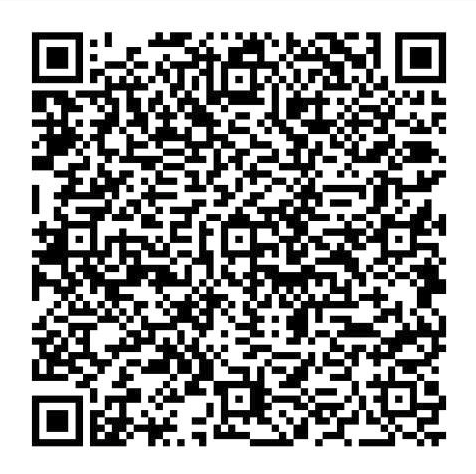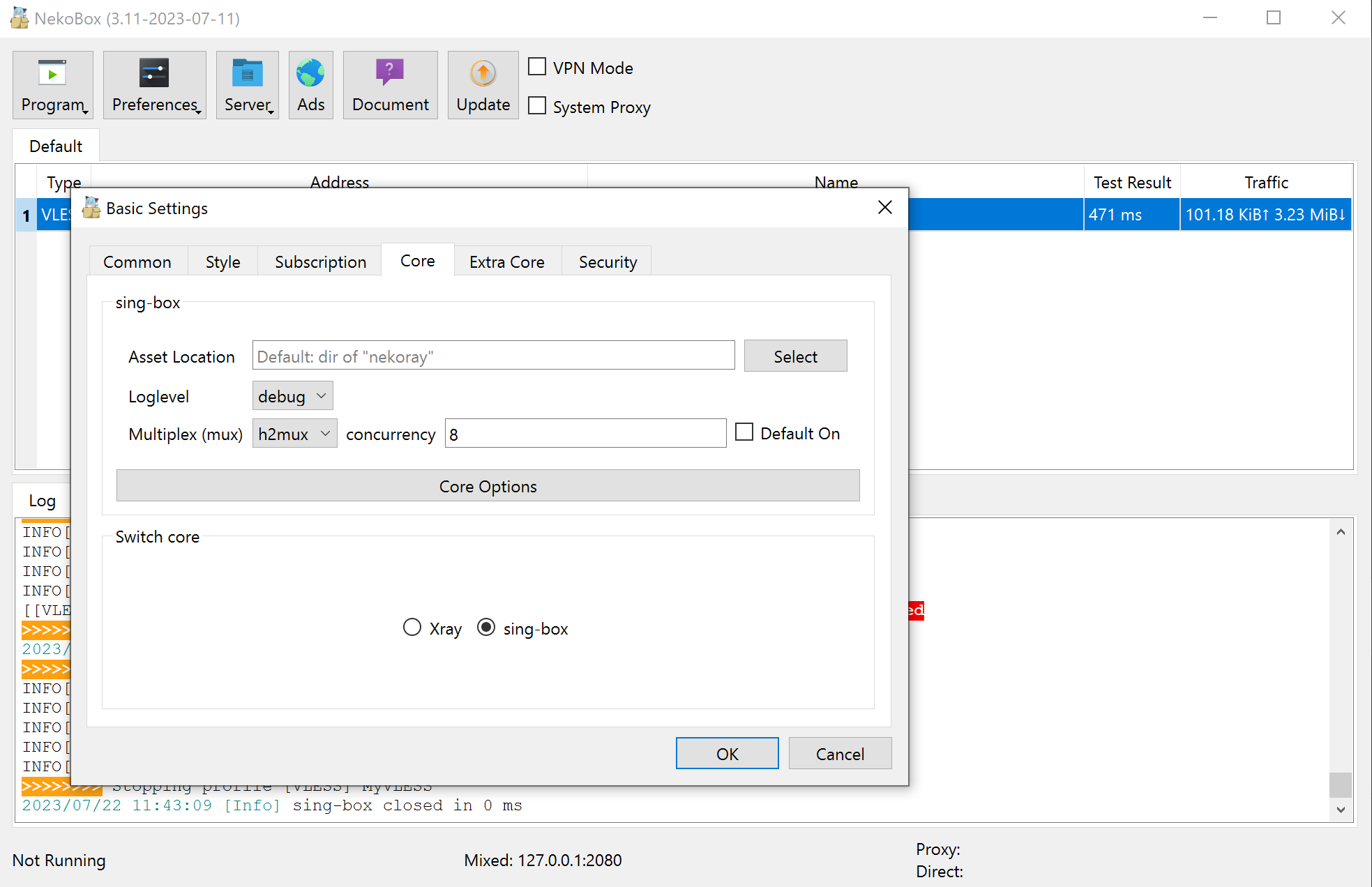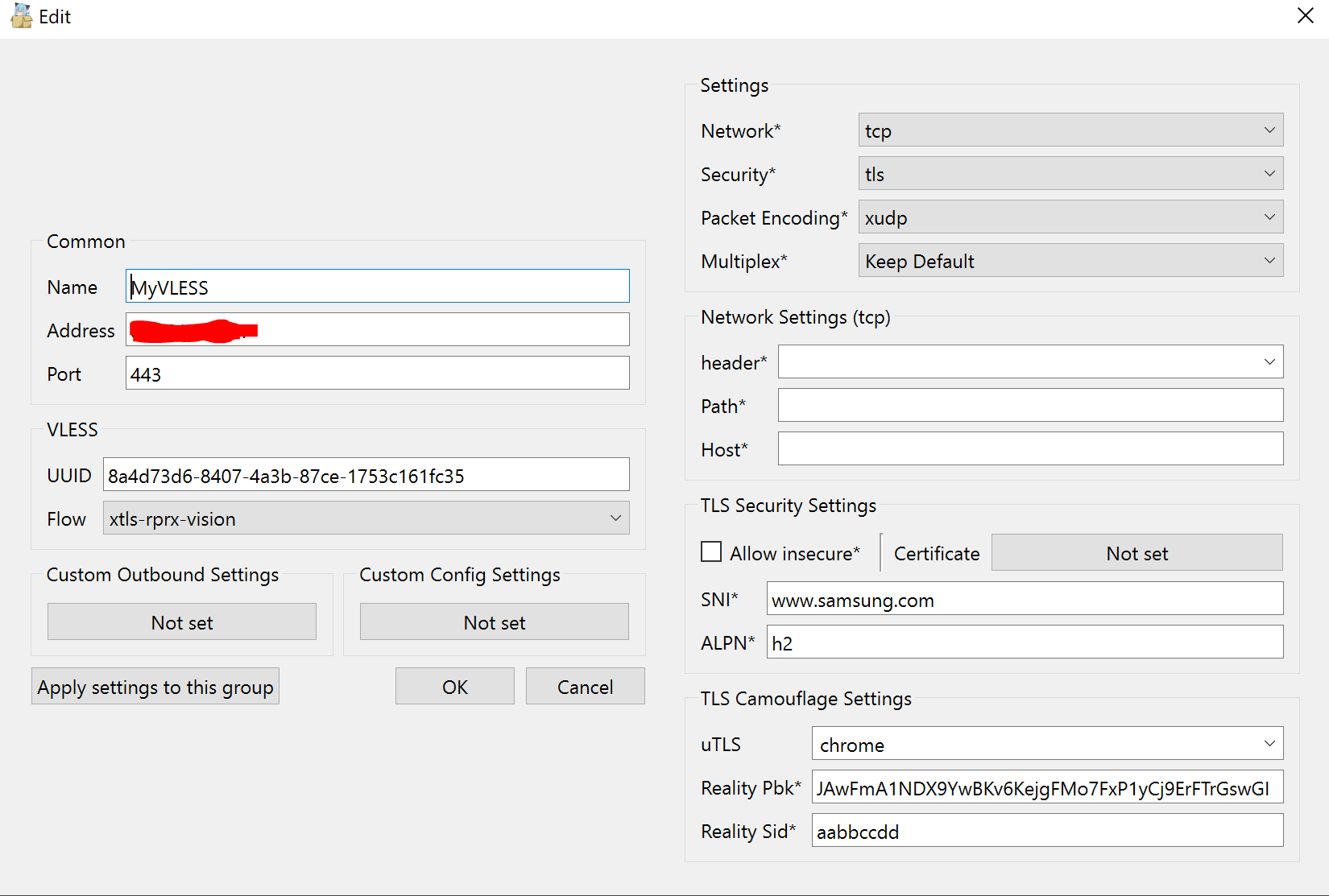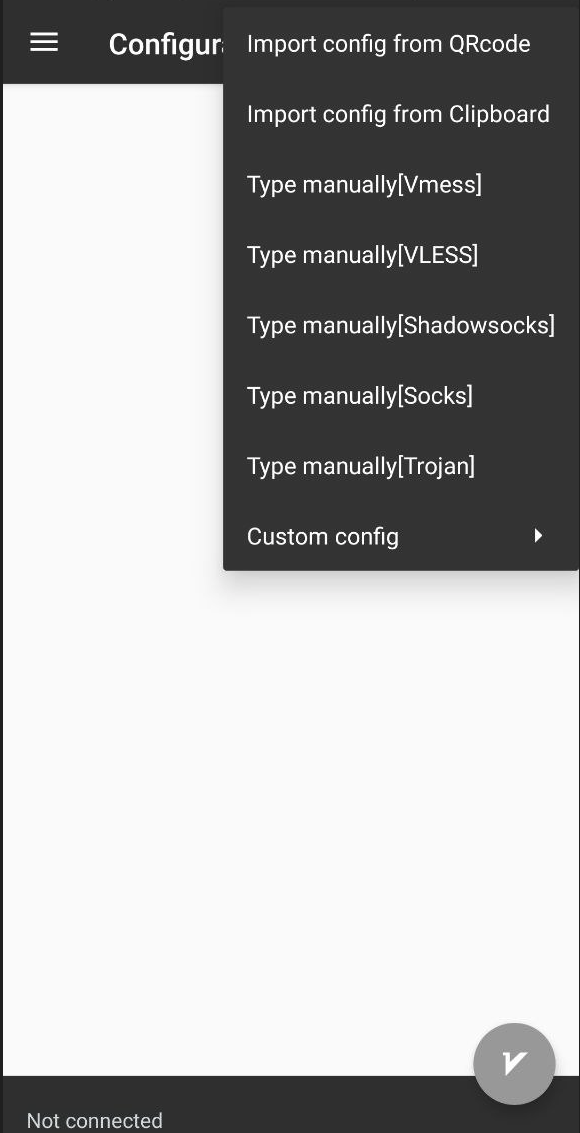This is a simple docker image which starts up in just a few seconds and launch a proxy-server ready to accept client connections. This proxy-server does not encrypt your data, but it can masquerade your traffic as a regular TLS-connection. To unauthorized users your proxy-server will look like a harmless site.
To get it running, just copy & paste the snippet below in your terminal:
sudo docker run -d --rm -p 443:443 -v xtls-reality-volume:/opt/xray/config --name xtls-reality myelectronix/xtls-realityThe XTLS-Reality proxy server will be up and ready to accept connections on port 443.
To get more detailed information, go to Quick Start.
| Name | URL |
|---|---|
| GitHub | https://github.com/myelectronix/xtls-reality-docker |
| Docker Hub | https://hub.docker.com/r/myelectronix/xtls-reality |
| XTLS GitHub | https://github.com/XTLS |
| Habr | https://habr.com/ru/articles/731608/ |
| Variable | Description | Default value |
|---|---|---|
| SNI | A website address for masquerade. It must support TLSv1.3 and HTTP/2 | www.samsung.com |
| SHORT_ID | Short ID. You can generate any 32-bit number in HEX-format | aabbccdd |
After container was run using docker run or docker compose up command, it's possible to execute additional commands using docker exec command. For example, sudo docker exec xtls-reality bash get-client-qr.sh. See table below to get the full list of supported commands.
| Command | Description |
|---|---|
get-client-qr.sh |
Outputs a QR-code with client settings. You can scan this code by a mobile application (for exampe, v2rayNG) and get a quick connection. |
get-client-settings.sh |
Outputs a client settings in text form |
regenerate-client-settings.sh |
Generate a new UUID, Private and Public key. Docker container must be reload |
- Any hardware or vps/vds server running Linux. You must have administrative rights on this machine.
- Docker installation on your server.For more information please see https://docs.docker.com/engine/install/
- Your server must have a public IP-address
You can run XTLS-reality proxy server in two ways of your choice: docker run or docker compose.
Pull the latest version of XTLS-reality-docker image:
sudo docker pull myelectronix/xtls-reality:latestCopy & paste the following command to run XTLS-reality-docker:
sudo docker run -d --rm \
-p 443:443 \
-e SNI=YOUR_SNI \
-e SHORT_ID=YOUR_SHORT_ID \
-v xtls-reality-volume:/opt/xray/config \
--name xtls-reality myelectronix/xtls-reality:latestTo check a status of the container you can execute the following command
sudo docker psThe output should look like this
CONTAINER ID IMAGE COMMAND CREATED STATUS PORTS NAMES
82d35a13b672 myelectronix/xtls-reality "/bin/bash ./entrypo…" 8 seconds ago Up 7 seconds 0.0.0.0:443->443/tcp, :::443->443/tcp xtls-realityThe another way of start up XTLS-reality proxy-server is docker compose. Docker compose saves all startup options in a special file and can automatically restart containers if they fail. Firts of all you must install docker compose plugin. For more information please see https://docs.docker.com/compose/install/linux/
After install docker compose plugin clone this git repository:
git clone https://github.com/myelectronix/xtls-reality-dockerChange your work directory and run docker compose
cd xtls-reality-docker
docker compose up -ddocker-compose.yaml file before launch docker compose or leave a default values.
To check a status of the container you can execute the following command
sudo docker psThe output should look like this
CONTAINER ID IMAGE COMMAND CREATED STATUS PORTS NAMES
82d35a13b672 myelectronix/xtls-reality "/bin/bash ./entrypo…" 8 seconds ago Up 7 seconds 0.0.0.0:443->443/tcp, :::443->443/tcp xtls-realityAfter run XTLS-reality docker you can get a settings for client connection. You have a two ways for get connection: QR-code or text form. To get the QR code, run the following command
sudo docker exec xtls-reality bash get-client-qr.shThe result will be a generated QR-code in your terminal as shown below
To get the text form settings, run the following command
sudo docker exec xtls-reality bash get-client-settings.shThe result will be a text settings in your terminal as shown below
IP Address: XXX.XXX.XXX.XXX
UUID: e4a047bb-fd0a-4742-b52d-4ef83fae4ef2
Public key: gF5RvoxnC5btsqZ9YvNLtH-gaUfcrDXDLif-NM7oFQ4
SNI: www.samsung.com
ShortID: aabbccddYou can use various proxy client programs to connect to your XTLS reality proxy.
If you use windows you can use NekoBox
In NekoBox window select Preferences - Basic Settings - Core and set sing-box button
Then select Server - New Profile - VLESS and set the settings according to the picture below, use your IP-address, UUID, SNI, Public key and ShortID.
Then save the settings and launch your proxy. For testing the connection use Current Select - URL Test
If you use android you can install v2rayNG
To connection v2rayNG select Import config from QRcode and scan QR-code with your settings.
As a result you should have a new connection in the list.
Activate it and use your XTLS-reality proxy.
To stop and remove your XTLS-reality-docker container execute the following command
sudo docker rm --force xtls-reality Your settings (UUID, Private and Public keys) storaged in special docker volume. So they won't change when you delete a container and start a new one. If you desire remove all your settings execute the following command after stop and remove docker container.
sudo docker volume rm xtls-reality-volume 



